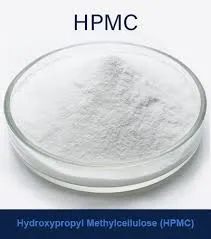
Dec . 13, 2024 04:42 Back to list
hydroxyethyl cellulose for paint
Hydroxyethyl Cellulose for Paint Enhancing Quality and Performance
Hydroxyethyl cellulose (HEC) has emerged as an essential additive in the paint and coatings industry, playing a significant role in enhancing the performance and quality of various paint formulations. As a non-ionic, water-soluble polymer derived from cellulose, HEC possesses unique properties that make it an ideal candidate for improving the stability and application of paints and coatings. This article explores the advantages and functions of hydroxyethyl cellulose in paint, its influence on paint characteristics, and its environmental benefits.
Versatile Properties of Hydroxyethyl Cellulose
HEC is known for its exceptional thickening, stabilizing, and film-forming properties. When added to paint formulations, it effectively increases viscosity, allowing for easy handling and application. This is particularly beneficial for water-based paints, which may require modifications to achieve desired flow characteristics. The viscosity imparted by HEC ensures that the paint adheres well to surfaces without dripping or running, leading to a more uniform finish.
Moreover, HEC enhances the stability of paint formulations by preventing sedimentation and separation of components. This stability is crucial for maintaining consistent color and texture in commercial paints, which otherwise may deteriorate over time during storage or application. By ensuring homogeneous dispersions, HEC contributes to a longer shelf life for paint products.
Impact on Application and Performance
One of the key advantages of using hydroxyethyl cellulose in paint is its effect on application performance. The thixotropic nature of HEC allows paint to easily flow when force is applied, providing excellent brushability and roller application features. This property is essential for professional painters and DIY enthusiasts alike, as it simplifies the painting process and enhances control over the paint’s spread and coverage.
hydroxyethyl cellulose for paint

In addition to improving application, HEC influences drying times. Its presence helps regulate the evaporation of water in water-based paints, allowing for a controlled drying process. This control is beneficial for achieving optimal film formation, which results in a durable and aesthetically pleasing finish. Furthermore, HEC can improve the paint's adhesion to various substrates, ensuring lasting results that resist peeling and flaking.
Environmental and Safety Benefits
The adoption of hydroxyethyl cellulose in paint formulations aligns with the growing trend toward environmentally friendly products. As a cellulose derivative, HEC is derived from renewable biomass sources, making it a sustainable option in an industry often scrutinized for its environmental impact. By using HEC, manufacturers can create water-based paints that are low in volatile organic compounds (VOCs), meeting stringent regulatory standards and appealing to environmentally conscious consumers.
Additionally, hydroxyethyl cellulose is considered safe for use in various applications, including paints intended for indoor use. Its non-toxic nature and absence of harmful solvents contribute to improved indoor air quality, making it a popular choice for residential and commercial paint formulations.
Conclusion
Hydroxyethyl cellulose is a valuable additive that significantly enhances the performance, quality, and environmental profile of paint formulations. Its ability to provide viscosity control, stability, and improved application properties makes it an indispensable component in modern paint technology. By leveraging the benefits of HEC, paint manufacturers can create products that meet the demands of both professional applicators and consumers, all while maintaining a commitment to sustainability and safety. As the paint and coatings industry continues to evolve, the role of hydroxyethyl cellulose is likely to expand, further solidifying its position as a key ingredient in high-quality painting solutions.
-
Versatile Hpmc Uses in Different Industries
NewsJun.19,2025
-
Redispersible Powder's Role in Enhancing Durability of Construction Products
NewsJun.19,2025
-
Hydroxyethyl Cellulose Applications Driving Green Industrial Processes
NewsJun.19,2025
-
Exploring Different Redispersible Polymer Powder
NewsJun.19,2025
-
Choosing the Right Mortar Bonding Agent
NewsJun.19,2025
-
Applications and Significance of China Hpmc in Modern Industries
NewsJun.19,2025







